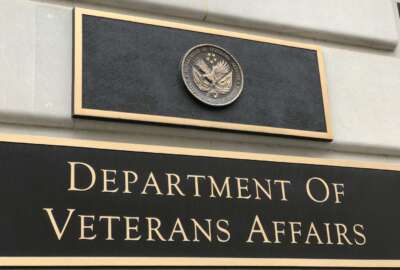

The Department of Veterans Affairs is developing a plan to expand its network of healthcare facilities across the country and improve the infrastructure of some of...
Best listening experience is on Chrome, Firefox or Safari. Subscribe to Federal Drive’s daily audio interviews on Apple Podcasts or PodcastOne.
The Department of Veterans Affairs is developing a plan to expand its network of healthcare facilities across the country and improve the infrastructure of some of its existing facilities.
The VA expects to submit a new infrastructure plan to lawmakers in the first half of the new year, focused on expanding its footprint of facilities as it prepares for a historic expansion of veteran health care and benefits under the PACT Act.
But before it can act on its infrastructure plan, Undersecretary for Health Shereef Elnahal said VA needs Congress to pass a comprehensive spending deal for the rest of fiscal 2023.
“We are going as full speed ahead as we can with our current authorities on strategic prioritization of new infrastructure projects,” Elnahal told reporters on Tuesday. “All of that is in the works, going through the gears of the agency to approve that strategic prioritization. We can’t do any of that without the funding, and it remains absolutely critical that we get infrastructure funding in this next budget,” Elnahal said.
Incoming House Democratic Caucus Chairman Pete Aguilar (D-Calif.) said in a press conference Tuesday that House Democrats are concerned that the threat of a government shutdown “will severely impact the VA and our veterans.”
“We have full faith in Chairwoman DeLauro to deliver an omnibus that protects both our veterans and our priorities within this Congress,” Aguilar said, referring to the top Democrat on the House Appropriations Committee.
Elnahal said VA facilities across the country are drafting plans for an “Infrastructure 2.0” effort that will look at expanding the VA’s footprint. Needed following the PACT Act signed into law and long-term effects of the COVID-19 pandemic.
The VA is currently updating the market assessments that served as the foundation for its recommendations to the Asset and Infrastructure Review (AIR) commission, which never saw any of its nominated commissioners make it through the Senate confirmation process.
Those old market assessments, which date back to 2019, will be updated to reflect the current health care needs of the VA’s patient population since the start of the COVID-19 pandemic, as well as anticipated health care needs as VA implements the PACT Act. The legislation is expected to bring an additional 3.5 million veterans into VA care.
The market assessments provide a data snapshot into how many veterans live in each region, what health conditions they have, the current capabilities of VA facilities, the capacity of community care providers and a projection of how the veteran population will shift over the coming years.
“This is an opportunity for us to refresh that data, which will no doubt spell an even higher demand, and especially in light of the PACT Act, which will mean more increasingly relying upon us,” Elnahal said.
Elnahal said the VA expects to send at least some of its updated plans for new facilities back to Congress in the first half of calendar year 2023, but said the timing is subject to change.
“That has to be done right. And so that will take however long it takes for us to come up with that next set of plans. But again, the plans will be on a shelf unless we can get the funding to execute on it,” Elnahal said.
Elnahal said the VA’s updated infrastructure plan will reflect expanding the agency’s footprint of medical facilities across the country.
The VA under its scrapped plans to the AIR Commission, planned to close approximately three dozen VA medical centers (VAMCs) and replace about half of them with new construction. The VA would have permanently closed the other half, and shifted veteran care to local VA inpatient and outpatient facilities.
“I will say overwhelmingly that our focus is on what we need to build. We are not focused on closures. We’re not focused on the utility of current infrastructure nearly as much as what needs to be built and fortified,” Elnahal said.
The average age of VA medical facilities is 60 years old, which is much older than most private sector facilities. Elnahal pointed to a burst pipe that closed the VA medical center in Manchester, New Hampshire for several days as an example of an “unsustainable situation for veterans and VA.”
“We need to build new infrastructure in areas of significant veteran growth, and it is also apropos of our ability to meet healthcare demand under the PACT Act,” Elnahal said. “So doubling down on the need for Congress to afford us the funds to be able to do this, it is an absolutely essential need for veteran health care.”
VHA is also preparing to deploy health care personnel to facilities that might see a critical shortage of available employees, given an uptick in COVID-19 cases.
“If needed, we will employ every single tool we’ve done before on getting support to local facilities where they need it,” Elnahal said. “Every facility has the experience and playbook for increasing surge capacity, should that be needed … We hope that that’s not needed anywhere, but we’ll prepare just in case it is.”
The VA through its Disaster Emergency Medical Personnel System program is able to deploy its health care staff to facilities facing employee shortages if needed.
Elnahal said DEMPS is part of the agency’s “staff fortification” efforts, especially if employee COVID-19 cases this winter come close to last year’s levels.
“We’re continuously trying to think about how we fortify deployable clinical teams in the context of the pandemic, knowing that we’re still in the middle of it,” he said.
In addition to the DEMPS program, the VHA is staffing up a Clinical Deployment Team. Elnahal said clinicians assigned to this team don’t have a panel of patients assigned to their care.
“That’s different from DEMPS, where folks leave their day jobs wherever they are, which may include patient care wherever they are, and go somewhere else,” Elnahal said.
Copyright © 2025 Federal News Network. All rights reserved. This website is not intended for users located within the European Economic Area.
Jory Heckman is a reporter at Federal News Network covering U.S. Postal Service, IRS, big data and technology issues.
Follow @jheckmanWFED


